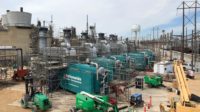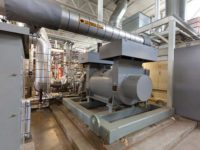According to the U.S. Department of Energy’s (DOE’s) Energy Information Administration (EIA), a total of 135 petroleum refineries were operable in the U.S. as of Jan. 1, 2019. Six were built in this century, three during the 1990s, and two in the 1980s. That leaves 124 that are 40 or more years old. Most of these units, and even the handful built during the last two decades of the 20th century, are in urgent need of upgrade.
That makes Texas ground zero for a boiler upgrades in the U.S. The Lone Star state has 47 refineries, the bulk of which are clustered long the Gulf Coast. And most of them are old. As a result, they tend to suffer from unplanned outages, higher fuel costs, and general inefficiency. These facilities are under attack on two fronts: tightening environmental mandates call for upgrades to bring refineries within acceptable emissions limits; in parallel, management demands predictable profits and the elimination of sudden shutdowns, which can mean millions in losses per day.
There comes a point where the high cost of upgrades is outweighed by the losses or fines incurred by trying to eke more production out of a rickety infrastructure.
The Air Liquide Bayport Complex near Houston, for example, didn’t just replace a few aging pieces of equipment. It staged an expensive, multistage revamp to bring the complex into the 21st century. This included upgrading its cogeneration units to raise its efficiency, production capacity, and life span. Aging boilers from the 1960s that suffered from poor reliability and efficiency were replaced by three new auxiliary boilers from Rentech Boiler Systems.
These boilers support the air separation units at Bayport as part of the massive output of Air Liquide Large Industries U.S. The company supplies industrial and specialty gases to the metals, chemicals, refining, energy, pharmaceuticals, food and beverage, manufacturing, materials handling, laboratories and research, aeronautics, and space industries. These customers have substantial needs for oxygen, nitrogen, argon, hydrogen, and syngas. They demand a reliable and continuous supply, whether the gases come via cylinder, bulk delivery, or pipeline. Many of them also rely on Bayport for steam, electricity, and water.
The Bayport complex covers 88 acres. It is central to the company’s 2,000-mile Gulf Coast Pipeline System, which reaches from Texas to Louisiana. Unlike the many other Air Liquide facilities around the globe, it is the only one to have on-site air separation units, cogeneration units, boilers, industrial water treatment, and a steam methane reformer.
Pressed by the requirement to meet stringent new emissions requirements, the necessities of high availability, and runaway demand for its product, management decided to increase capacity and upgrade several major portions of the site. An investment of around $230 million focused on modernization of its on-site cogeneration plant and boilers. The Bayport Industrial District gave further impetus to the upgrade by renewing a long-term contract for Air Liquide services and products.
This encompassed energy-efficient upgrades to four cogeneration units to increase production output and extended the life of the units by more than 20 years. The facility now has the capacity to produce 300 MW of electricity and more than 1,300 tonnes of steam per hour.
“The redevelopment of our Bayport facility, which is Air Liquide’s largest industrial complex in North America, has positioned us to better serve the growing needs of our customers in this region in a safe, reliable, and efficient way,” said John Buckley, CEO of Air Liquide USA.
The project included the replacement of three auxiliary boilers and steam plant infrastructure upgrades that support the existing air separation units. More than 60 years old, the previous boilers suffered from poor reliability and efficiency.
Rentech Boiler Systems supplied three 400,000-pound-per-hour direct-fired boilers. These factory assembled, natural circulation, water-tube boilers include drainable convective superheaters that operate at lower gas-side temperatures to extend superheater life. Two-stage convective superheaters dramatically improve performance over turndown.
Rentech custom-engineered the units for Bayport. In addition to conservative steam drum sizing, the company employs Chevron vane separation technology to minimize moisture carryover. The boiler design also accommodates high cycling operation, and 100% membrane wall fabrication provides a fully water-cooled furnace with zero gas bypass and lower emissions. As a result, there is no need for refractory walls or refractory seals. This design approach reduces operating costs as it requires less maintenance to repair or replace damaged refractory while enabling faster startup and cool down.
The maintenance manager at Air Liquide notes that the boilers are installed and operating well. Reliability is much higher, and emissions have been considerably reduced.





